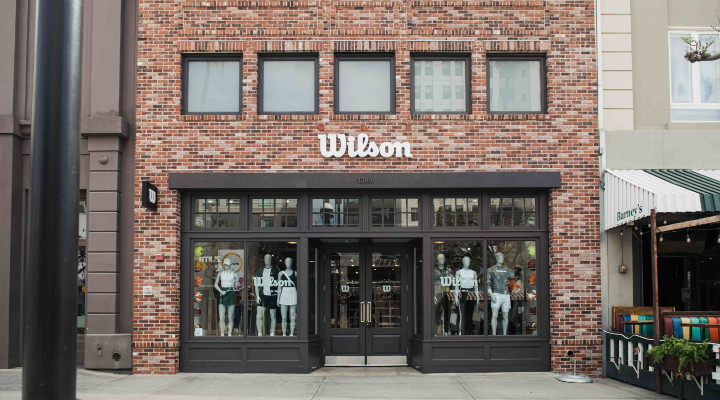Wilson Sporting Goods Co recently unveiled its first retail store in California, located within the well-known Third Street Promenade shopping district in Santa Monica. The 4,500 square foot space is the company’s first bricks-and-mortar location on the West Coast. The store will feature an in-store area for consumers to trial products, including a basketball hoop, hitting wall and on-site racquet stringing. It also has an ‘equipment room’, where shoppers can rent products before purchasin

sing.
The program covers select sporting goods across tennis, pickleball, basketball, football, volleyball and more.
Founded in 1913, Wilson is one of the world’s leading manufacturers of sporting goods. Recently, it started opening retail stores and now has two stores in Chicago, and three in Manhattan, including aSoHo flagship and stores on the Upper East Side and Columbus Circle.
Aligning to demographics
Brian Walker, CEO and founder of The Retail Doctor Group, believes that Wilson chose the Santa Monica location with its demographics and distribution network in mind.
“I think they believe their business is aligned with this geographical location, and one could speculate that they might be also getting some incentives to invest in the area. I think they are well positioned in the marketplace, and it’s all about competitive positioning,” he told Inside Retail.
On the company’s approach to an immersive experience and product testing in the Santa Monica store, Walker feels that this approach is spot on.
“When we talk about building a retail ecosystem, the key is to have a physical experience that is immersive. Time is a currency, so consumer time well spent in an interactive, engaging, experiential environment is critical,” he added.
Consumer engagement
Walker sees the ‘equipment room’ concept in the store as another interesting aspect that deserves attention. He feels that it will increase customer engagement as people get to try the products before they buy them.
“This changes the classic retail model of purchasing and reselling. It’s giving people confidence and this is a great message to the consumer that Wilson stands by its brand and they want people to have the best solution. So this is great on all levels,” he stated.
Most online retailing by itself is unprofitable, especially in apparel, according to Walker. He puts this down to returns and costly distribution costs. So, he feels that Wilson’s strategy of having a few physical locations will lead to higher average sales and profitability.
“When you allow people to engage in an immersive shopping experience, pricing becomes less of a factor, and in terms of brand architecture, pricing and product strategy, Wilson’s approach is the right one,” he added.
Challenges and opportunities
While Wilson manufactures a wide variety of sporting goods, Walker believes it is mostly associated with certain verticals, such as tennis. He feels the biggest challenge that the brand will face in the US market is its lack of physical stores.
“The challenge with physical distribution is that you need a deep network of stores, they only have six stores, and that is not enough to really penetrate the market. It’s a really crowded and competitive market in the US, and this is a big challenge for them,” he noted.
Compared to brands like Nike and Adidas, Walker also feels that Wilson needs to spend more time on brand building, as it has a unique heritage, but still lacks the storytelling and aspirational qualities that other prominent brands have.
“They need to differentiate themselves from the rest of their competitors, if not they could slip into a volume commoditised play. They need to do this on the basis of quality, service, reputation, reliability and trust building,” he stated.
According to him, this is a well worn path, similar to the way Nike courted Michael Jordan to create Air Jordans. He is of the opinion that the brand needs to choose the right athletes for brand -building and leverage social media influencers to build up their presence.
“The building of influence through tribes are vital components of this strategy, but it’s also about the relevance and popularity of athletes. Wilson will need to build social traction to grow the brand and create aspirational value to its consumers,” he concluded.







